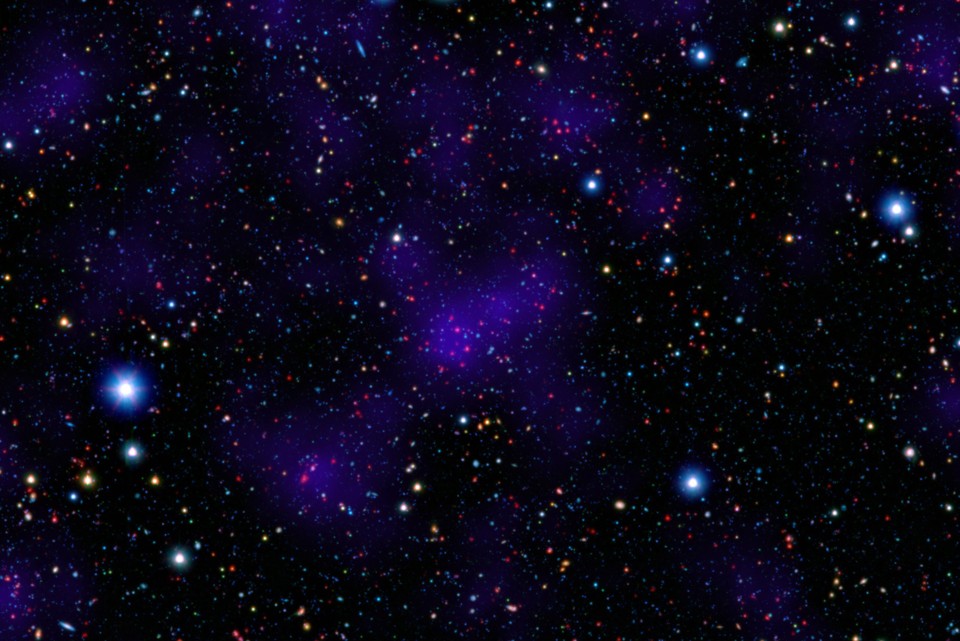[Background / related]
A Cosmological Argument for God's Existence

MAGNITUDE
·
1 light year: the distance light travels in
a year is about 10,000,000,000,000
km away
·
Nearest star in our own galaxy is 38,000,000,000,000 km away (4.2
light years)
·
Nearest neighbor spiral galaxy Andromeda
is 2 million light years away
·
We see galaxies at distances of several billion
light years away, looking as they did that long ago when the light left the
galaxy.
There are about 100 billion galaxies, and at least 100 billion stars in each one, meaning there are roughly 10,000 billion billion (10,000,000,000,000,000,000,000) stars in the universe!
...
In the beginning God created the heavens and the earth [secular = "Big Bang"]. - Genesis 1
កាល ពីដើម ដំបូងបង្អស់ ព្រះជាម្ចាស់ បានបង្កើត ផ្ទៃមេឃ និងផែនដី។ - លោកុប្បត្តិ ១
***

How Fast Is the Universe Expanding?
Astronomers have added a new data point in their attempts to answer the cosmic question.
The Atlantic | 27 January 2017
Astronomers have known for nearly a century that the universe is expanding, and has been since the moment it exploded into existence in the Big Bang. Everywhere in the universe, galaxies, including our own, are moving away from each other. “Take an uninflated balloon and cover it with dots. Each point represents a galaxy,” the FAQ webpage for the Hubble Space Telescope offers as an analogy. “When you inflate the balloon, the points move away from one another.”
What astronomers are still trying to determine, however, is exactly how fast the universe is expanding. On Thursday, the latest measurement of the rate of expansion, known as the Hubble constant, was announced, and it’s both exciting and confusing. The estimate, which was made by H0liCOW, a project led by international scientists from the Max Planck Institute in Germany, the École Polytechnique Fédérale de Lausanne in Switzerland, and other institutions, lines up with some previous figures, but not others.
This discrepancy could be a statistical fluctuation, which could be avoided as scientists and technology get better at measuring the Hubble constant. Or it could be attributed to something else entirely—like new physics beyond our understanding of how the universe works.
Scientists have spent years refining methods for measuring the Hubble constant, using powerful telescopes on the ground and in Earth’s orbit. Some scientists look to the early universe by studying the cosmic microwave background, the radiation from the Big Bang that fills the universe in every direction to this day. Others look at the more recent universe, examining the light coming from Cepheid stars, objects whose brightness pulsates, or supernovae, the explosions of stars that can outshine entire galaxies.
The newest estimate of the Hubble constant, which is set to appear in five studies in the Monthly Notices of the Royal Astronomical Society, came from the observation of three nearby galaxies and several distant quasars, the brightest objects in the known universe. Quasars exist in the cores of faraway galaxies, and their light flickers over time. Some galaxies in our cosmic neighborhood are so massive that they bend the light coming from quasars, producing multiple images of the quasars that astronomers can see. The light arrives at different times, depending on the path it takes through the galaxies; light takes longer to travel through the dense parts of galaxies than through areas that are sparse. Scientists analyzed the delays in travel time in these images to come up with a precise estimate for the Hubble constant.
The H0liCOW estimate puts the Hubble constant at about 71.9 kilometers (44.7 miles) per second per megaparsec (one megaparsec equals about 3.3 million light-years). In 2015, another team, using observations of the cosmic microwave background, determined the rate was 67.8 kilometers per second for megaparsec. And last year, a different team, using observations of Cepheid stars and supernovae put it at 73.2 kilometers per second for megaparsec. That figure was higher than most earlier estimates, and surprised many astronomers. Hubble’s own estimate—500 kilometers per second for megaparsec—was way off, but such is the nature of discovery when the right technology isn’t around yet.
“The expansion rate of the universe is now starting to be measured in different ways with such high precision that actual discrepancies may possibly point towards new physics beyond our current knowledge of the universe,” said Sherry Suyu of the Max Planck Institute, who led the project, in a press statement.
The H0LiCOW team plans to expand their study by measuring the light from up to 100 quasars. That’s the most astronomers can do for now: examine the tiny sliver of stuff they can see, the things that emit light—stars, galaxies, glittering cosmic explosions. They can’t see what makes up 95 percent of the universe: Dark energy, dark matter, and dark radiation. And that’s the tricky part, because there, where there’s no light, may rest the answers.


Which GOD? There are over 1000 of them world wide. Which one? Mahamed, Jesus, Jehova, Visnu,....
ReplyDelete